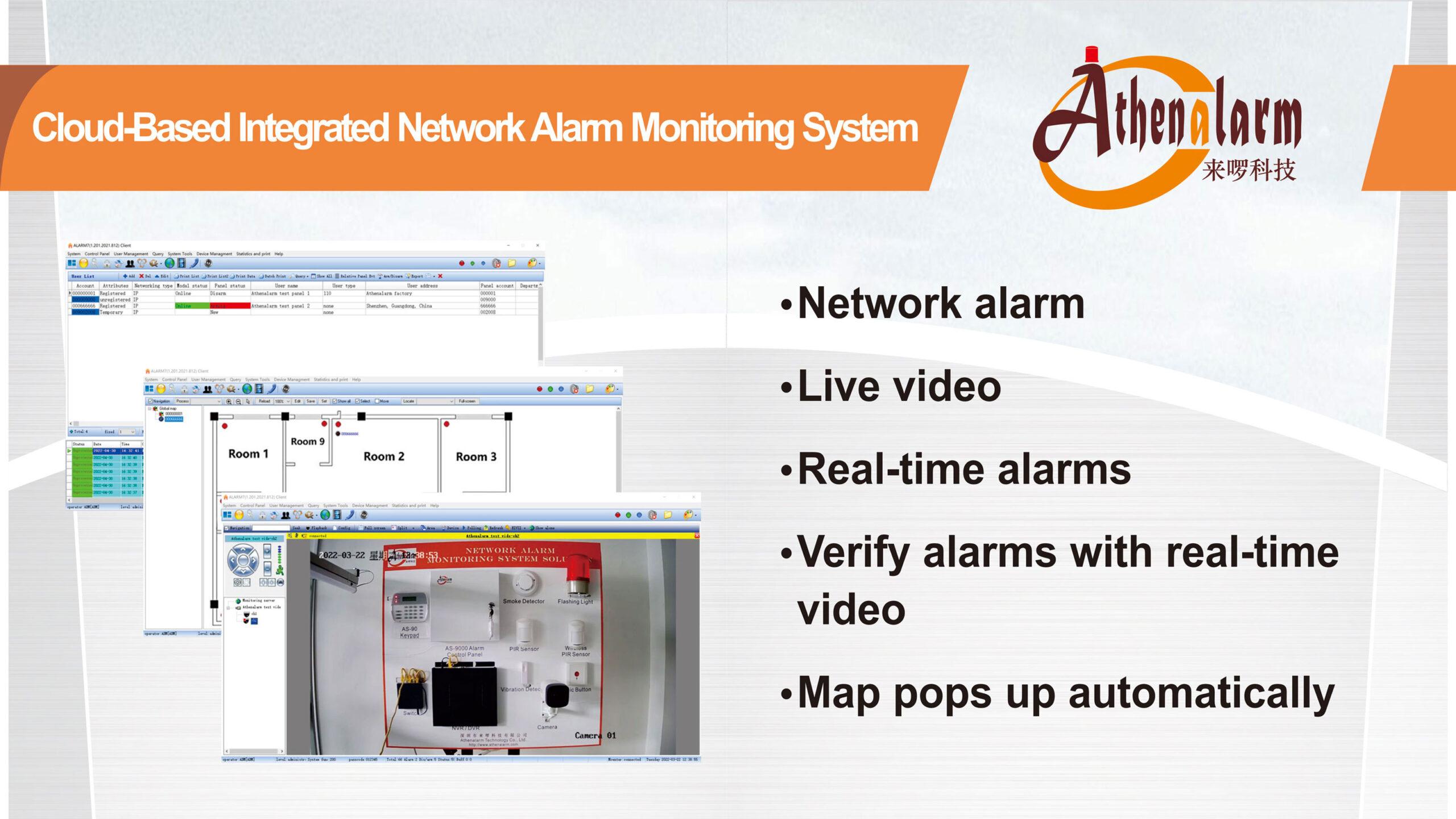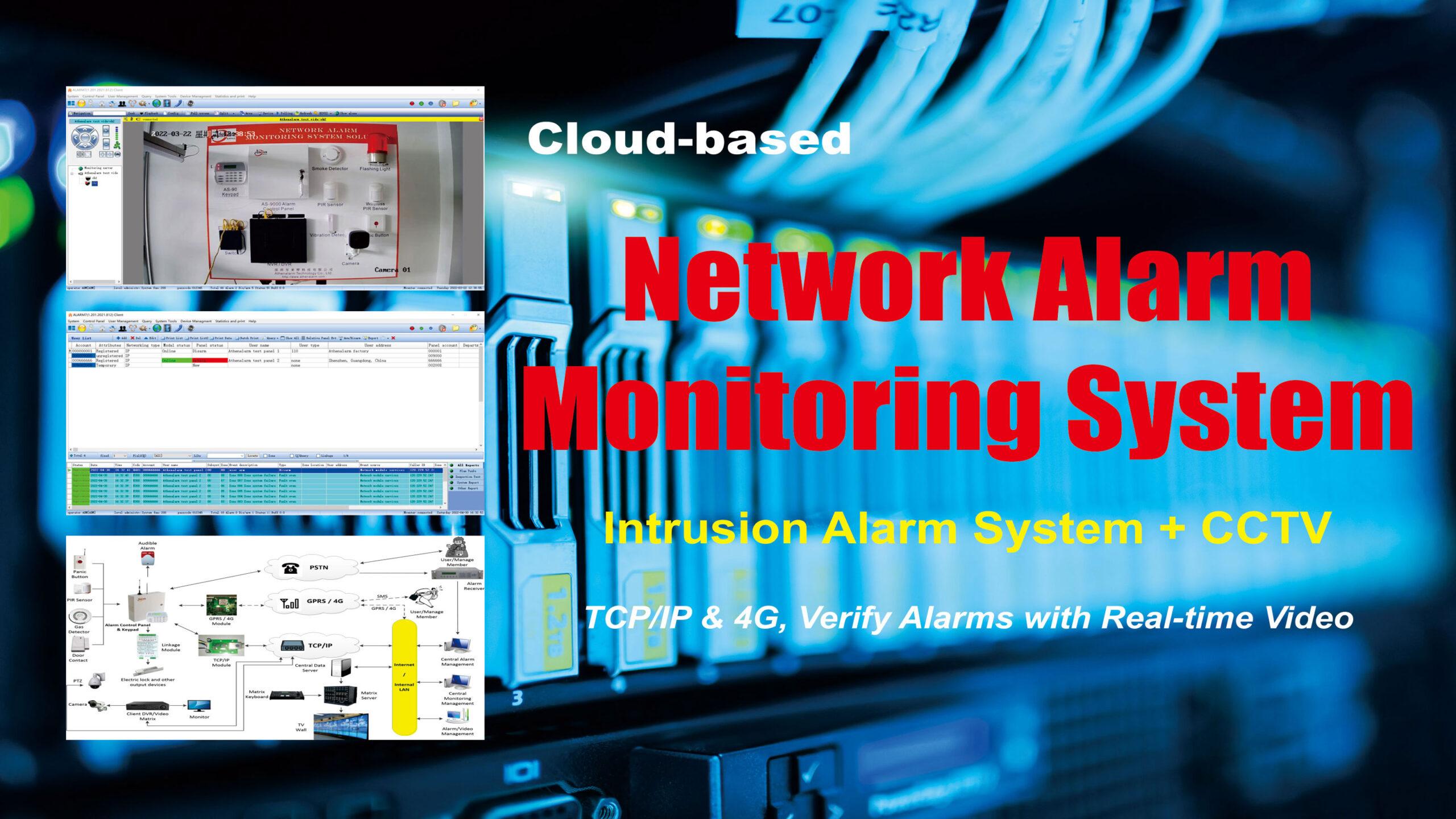



The Technological Development of Intrusion Alarm Systems
1 The technological development of intrusion alarm panels
At present, the intrusion alarm panel adopts modular settings for the convenience of user secondary development. When the product leaves the factory, the manufacturer not only prepares the core components, but also reserves some interfaces. Most additional functions are achieved by adding different modules, such as network modules, GPRS modules, 4G modules, voice modules, home appliance control modules, etc. For example, by adding a home appliance control module to the intrusion alarm panel, the intrusion alarm panel can become a controller for smart homes. Users only need to control the switch of home appliances, lighting control, gas, garage door switch, etc. through the keypad, remote control, or phone.
In addition to being integrated with smart homes, the intrusion alarm panel also adds SMS and voice functions, with the main purpose of improving system reliability. By using SMS alarm method, the alarm signal can be received anywhere, and the communication time is very short and the speed is fast. After adding a voice system, you can make phone calls for voice communication at any time, and you can also use voice monitoring to more accurately grasp the situation at the alarm site.
In addition to publishing alarm information, the alarm monitoring center can also publish property management content and various notifications to the intrusion alarm panel. At present, this feature has been applied in some high-end residential areas. In addition, in order to facilitate the search for the occurrence of alarm accidents and facilitate the rapid resolution of cases by alarm monitoring centers and public security departments, and better provide services to customers, more and more intrusion alarm panels have information storage functions. Suitable for large network alarm monitoring centers, the intrusion alarm panel can store more than 1000 alarm information for users to query at any time, and the alarm data is automatically backed up.
2 The technological development of intrusion alarm system networking function
The current intrusion alarm system mainly adopts various networking methods such as landline, dedicated bus (RS485, CAN BUS, etc.), network, power line, and mobile communication wireless network. The most widely used methods are still landline and bus system.
At present, landlines are the main way to network alarms. Users who install intrusion alarm systems are connected to the regional alarm monitoring center via landline, and the regional alarm monitoring center is responsible for receiving and handling alarms. The advantages of landline network alarm are: no need for additional wiring, reliable transmission network, and direct access to any location with landlines, with the most mature security management platform. Due to its ready-made and mature security management platform, it is convenient and relatively easy to integrate with other security systems (video surveillance systems, access systems, etc.) to achieve alarm linkage. The disadvantage is that the operating cost is relatively high, and residents who install alarms have to pay monthly rent for their phones, resulting in slower internet speeds. The landline network alarm system has been widely used in various industries, especially banks in the financial industry.
Dedicated buses (RS485, CAN BUS, etc.) are also a networking method for alarms, with main advantages such as fast speed (≤ 2 seconds), low operating costs, and no monthly rental expenses for users. However, in practical use, it has some undeniable defects: limited scope (only applicable to residential areas), poor reliability of line laying, easy transmission interference, lack of voice communication function, poor integration ability, etc. Therefore, this method is currently only applied within buildings or between buildings, and is at most applied to residential communities.
In recent years, with the prevalence of IP networks, many intrusion alarm panel manufacturers have also begun to use wired or wireless IP network networking methods. Although the TCP/IP network alarm method has the advantages of flexible installation, convenient and fast operation, high stability and reliability, it has also been favored by many users. However, TCP/IP alarms are now commonly used in residential areas, and wireless network access is also commonly used in areas where residents have already been renovated and it is not convenient to install additional wiring.
3 The technological development of alarm detectors
The development of intrusion alarm products to this day still relies mainly on infrared technology. Although new technologies such as laser, ultrasound, and microwave were gradually developed, infrared technology remained mainstream for a considerable period of time. Infrared beam detectors have the characteristics of mature technology, low cost, unaffected by environmental light, good wind resistance, and good vibration resistance. They can also maintain good performance in weather conditions such as fog, rain, and snow. Its shortcomings are manifested in the easy aging of equipment, short service life, high false alarm rate, and inability to prevent curve boundaries.
In response to the defects of false alarms and missed alarms in a single technology detector, there have been new generations of products such as dual detector and triple detector on the market. Dual detection refers to the integration of two detectors with different technological principles, and only alarms when the sensors of both detection technologies detect human intrusion. The common dual detection detectors on the market are mainly microwave + passive infrared, in addition to infrared + air pressure detectors and audio + air pressure detectors. In the past few years, the alarm detector market was mainly dominated by passive infrared technology. Later, finance, military, and high-end residential areas gradually began to use dual detection products. With the development of the community, the usage rate of dual authentication is gradually increasing, and the variety of products is also becoming more diverse. In order to further improve the performance of the detector, the addition of microprocessor technology to the dual detector is called the triple detector. Adding another technology detector to the triple detector becomes the quadruple detector.
4 The technological development of perimeter alarm systems
The perimeter alarm system refers to the use of microwave, infrared, electronic fence and other technologies to form a visible or invisible protective wall at the boundary of the protected area. If someone passes or intends to pass, the corresponding detector will send an alarm signal to the intrusion alarm panel in the security room or alarm monitoring center, and at the same time, it emits an audible and visual alarm and display the alarm position. Some intrusion alarm systems also link with perimeter analog electronic screens, and even link with video monitoring systems, access systems, and high-voltage lighting systems. In recent years, perimeter prevention has become a fundamental and important security measure, both in terms of prevention areas and prevention measures.
The perimeter alarm system can be applied to the perimeter fence area of a building or the exterior wall area of an internal building for prevention. But different detectors have different functions. Active infrared and microwave detectors alarm when intrusion occurs, that is, when an alarm occurs, the intrusion behavior has already occurred. Electronic fence detectors, similar to physical protection, not only have an intrusion alarm function, but also mainly serve as a deterrent. However, regardless of the type of detector, it can issue a warning in the first time and promptly inform security personnel to rush to the scene of the crime for processing, so that the intruder can terminate the crime before truly committing illegal acts and minimize losses. The perimeter alarm system of active infrared and microwave detectors has advantages such as beautiful appearance, concealed installation, wide warning range, and low investment cost. However, its disadvantages are slightly higher false alarm rate, weaker deterrence, and post alarm. The perimeter alarm system of electronic fence detectors has a low false alarm rate and strong deterrence, that is, they report to criminals before they break through the wall. The disadvantage is that the investment cost is relatively high.
The common feature of active infrared, microwave, and electronic fence detectors is that they can be easily integrated with intrusion alarm panels in hardware as front-end detection devices. They are relatively easy to install and have obvious preventive effects, so they have been favored by many users.
After years of development, perimeter alarm systems such as infrared radiation, vibration cables, buried induction cables, pulse electronic fences, etc. have been widely used in military, airports, ports, government agencies, and other places, and maintain a relatively high growth rate of application in these places.
